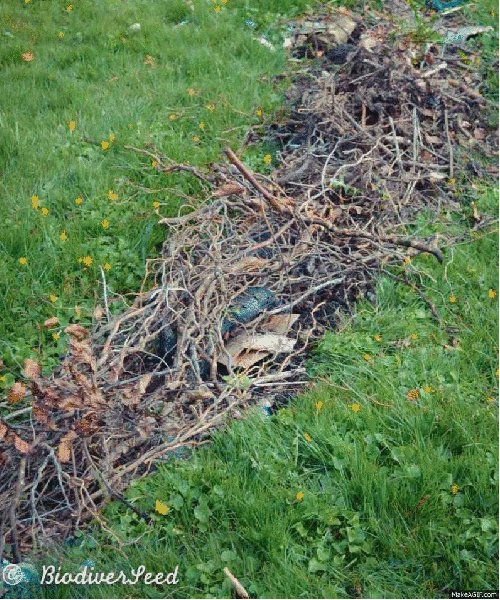

Mark/Flickr
Hügelkultur—German for “hill culture”—is a method of raised-bed gardening that uses composting wood and other biomass as a base for building a nutritious soil and a warm microclimate. It is a strategy that has been used for centuries in poor, compacted, alpine soils in Europe and was brought into permacultural praxis by Sepp Holzer, an Austrian ecological farmer.

Holzer uses hügelkultur mounds to compost whole trees, but in your own garden, it can start small. Over a season, you can pile the prunings from trees, as well as the weeds you dig up, into a mound. Next season, cover the mound with newspaper or cardboard (to hold down weeds) and a top-dressing of compost and leaves or bark chips; after that, plant anything you like on it!
Popular hügelkultur plantings are squashes and gourds, which appreciate the warmth radiating from the decomposing material inside the mound, and out-compete other plants that may grow on the mound.
The benefits of hügelkultur are manifold:
- All of that biomass that is normally trucked away or laid by the curb each year—prunings, leaves and weeds—ends up being put back into the soil.
- These materials build a rich, water-retentive, nutritious humus, and the lignin in the wood allows it to persist over years, acting somewhat like a sponge.
- These gardens are rich, biodiverse habitats. Mine are makeshift meadows that ground-dwelling bees have moved into.

Lynsey Grosfield
Not only are these gardens low maintenance and fertile, they also add visual interest to a landscape. Instead of needing heavy equipment to build up features like hills and knolls, you can build them over the course of a season with material that is normally discarded as waste. Combining them with swales (networked depressions in the landscape), you can use these gardens to channel water and reduce irrigation.
It’s one option among many for making a more naturalistic, less wasteful landscape!
About the Author: Lynsey Grosfield is the founder of BiodiverSeed, a global seed swap network devoted to the exchange of self-harvested, organic and heirloom seeds with the goal of preserving maximum genetic diversity. Follow BiodiverSeed on Twitter.




